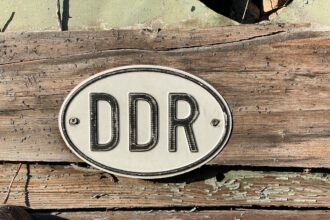Dissociation is a psychological phenomenon that can manifest in various ways, often as a response to overwhelming stress or trauma. You may find yourself feeling disconnected from your thoughts, feelings, or sense of identity. This disconnection can serve as a protective mechanism, allowing you to distance yourself from experiences that are too painful or distressing to confront directly.
In essence, dissociation acts as a mental escape route, enabling you to navigate through situations that might otherwise feel unbearable.
You might notice moments when you feel detached from your surroundings or as if you are observing your life from a distance.
Understanding the nuances of dissociation is crucial, as it can manifest in various forms and may be indicative of underlying psychological issues.
Key Takeaways
- Dissociation is a mental process where a person disconnects from their thoughts, feelings, memories, or sense of identity.
- Depersonalization involves feeling detached from oneself, while derealization involves feeling detached from the world around them.
- Dissociative Identity Disorder (DID) is a condition where a person experiences two or more distinct identities or personality states.
- Symptoms of depersonalization and derealization can include feeling like an outside observer of one’s thoughts or body, or feeling like the world is unreal or distorted.
- Symptoms of DID can include memory gaps, feeling like different identities have control over behavior, and experiencing severe distress or impairment in daily functioning.
Understanding Depersonalization and Derealization
Depersonalization and derealization are two specific types of dissociative experiences that you may encounter. Depersonalization involves a sense of detachment from oneself, where you might feel as though you are an outside observer of your own thoughts, feelings, or body. This can lead to a profound sense of unreality regarding your own identity.
You may look in the mirror and not recognize yourself or feel as if your emotions are muted or distant. On the other hand, derealization refers to a feeling of detachment from the external world. You might perceive your surroundings as strange or dreamlike, as if you are living in a movie rather than reality.
This can create a sense of confusion and anxiety, as the world around you feels unfamiliar and untrustworthy. Both depersonalization and derealization can occur independently or together, often triggered by stress, trauma, or anxiety. Understanding these experiences is essential for recognizing their impact on your life and seeking appropriate support.
Exploring Dissociative Identity Disorder (DID)

Dissociative Identity Disorder (DID), formerly known as multiple personality disorder, is a complex psychological condition characterized by the presence of two or more distinct personality states or identities within an individual. If you have DID, you may experience significant gaps in memory and a sense of losing time, as different identities take control at various moments. Each identity may have its own name, age, history, and characteristics, leading to a fragmented sense of self.
The development of DID is often linked to severe trauma during early childhood, such as physical, emotional, or sexual abuse. As a coping mechanism, your mind may compartmentalize traumatic experiences into separate identities to protect your core self from the pain associated with those memories. Living with DID can be incredibly challenging, as you navigate the complexities of multiple identities and the impact they have on your daily life.
Understanding DID is crucial for fostering empathy and support for those who experience this condition.
Symptoms and Experiences of Depersonalization and Derealization
| Symptoms and Experiences | Percentage |
|---|---|
| Feeling detached from one’s body or mind | 85% |
| Feeling like an outside observer of one’s thoughts or body | 75% |
| Feeling like the world is unreal or dreamlike | 65% |
| Difficulty connecting with emotions or physical sensations | 60% |
| Episodes of depersonalization or derealization lasting for extended periods | 50% |
When it comes to depersonalization and derealization, the symptoms can vary widely from person to person. You might experience feelings of detachment from your body or thoughts, leading to a sense of being disconnected from reality. This can manifest as a feeling of floating above yourself or watching your life unfold without being fully present.
These experiences can be disorienting and frightening, often leaving you questioning what is real and what is not. In addition to the emotional turmoil that accompanies these experiences, physical symptoms may also arise. You might notice changes in perception, such as altered visual or auditory sensations.
Everyday activities may become challenging as you struggle to engage with the world around you. The unpredictability of these episodes can lead to increased anxiety and avoidance behaviors, further complicating your ability to cope with daily life. Recognizing these symptoms is the first step toward understanding your experiences and seeking help.
Symptoms and Experiences of Dissociative Identity Disorder (DID)
Living with Dissociative Identity Disorder (DID) presents its own unique set of challenges and symptoms. You may find yourself experiencing significant memory gaps that can last for minutes, hours, or even longer periods. These gaps often involve forgetting important personal information or events that occurred while another identity was in control.
This can lead to confusion and frustration as you try to piece together your experiences. In addition to memory loss, you might notice distinct shifts in behavior, mood, and preferences depending on which identity is present at any given time. Each identity may have its own set of beliefs, values, and even physical mannerisms.
This fragmentation can create internal conflict and make it difficult for you to maintain stable relationships or a consistent sense of self. Understanding these symptoms is vital for both you and those around you, as it fosters compassion and support in navigating the complexities of DID.
Causes and Triggers of Dissociation
The causes of dissociation are often rooted in traumatic experiences or overwhelming stressors that exceed your ability to cope effectively. Childhood trauma is one of the most significant contributors to dissociative disorders, particularly in cases where individuals experience abuse or neglect at a young age. Your mind may resort to dissociation as a survival mechanism, allowing you to detach from painful memories and emotions associated with those experiences.
Triggers for dissociative episodes can vary widely among individuals. You might find that certain situations, environments, or even specific people can evoke feelings of detachment or unreality. Stressful life events, such as the loss of a loved one or significant changes in your life circumstances, can also act as catalysts for dissociation.
Understanding your triggers is essential for developing coping strategies and seeking appropriate support when needed.
Diagnosis and Treatment for Depersonalization, Derealization, and DID
Diagnosing dissociative disorders such as depersonalization/derealization disorder and Dissociative Identity Disorder (DID) requires a comprehensive evaluation by a mental health professional. You may undergo interviews and assessments designed to explore your symptoms, history, and any underlying trauma that may contribute to your experiences. It’s important for clinicians to differentiate between dissociative disorders and other mental health conditions that may present similar symptoms.
Treatment options for dissociative disorders often include psychotherapy as the primary approach. Therapeutic modalities such as cognitive-behavioral therapy (CBT), dialectical behavior therapy (DBT), or trauma-focused therapy can help you process traumatic memories and develop healthier coping mechanisms. In some cases, medication may be prescribed to address co-occurring symptoms such as anxiety or depression.
The journey toward healing can be complex but is essential for regaining a sense of control over your life.
Living with Dissociation: Coping Strategies and Support
Living with dissociation can be challenging, but there are coping strategies that can help you manage your experiences more effectively. Grounding techniques are particularly useful when you feel detached from reality; these methods encourage you to reconnect with the present moment through sensory experiences. You might try focusing on physical sensations—like feeling the texture of an object in your hand or listening intently to sounds around you—to anchor yourself back in reality.
Support from friends, family, or support groups can also play a crucial role in your journey toward healing. Sharing your experiences with others who understand what you’re going through can provide validation and comfort during difficult times. Additionally, seeking professional help from therapists who specialize in dissociative disorders can offer valuable insights and tools for managing your symptoms effectively.
Remember that you are not alone in this journey; there are resources available to help you navigate the complexities of living with dissociation while fostering resilience and hope for the future.
Depersonalization-derealization disorder (DDD) and dissociative identity disorder (DID) are both complex mental health conditions that involve dissociation, but they manifest in distinct ways. DDD is characterized by persistent feelings of detachment from one’s own body or surroundings, often described as feeling like an outside observer of oneself. In contrast, DID involves the presence of two or more distinct identity states that control an individual’s behavior at different times. Understanding the nuances between these disorders is crucial for accurate diagnosis and treatment. For a deeper exploration of these topics, you can read a related article on the [Unplugged Psych website](https://www.unpluggedpsych.com/).
LEARN MORE About Depersonalization & Derealization
FAQs
What is depersonalization/derealization?
Depersonalization/derealization is a mental health condition characterized by feeling detached from oneself (depersonalization) and feeling detached from the world or surroundings (derealization). It can be a symptom of various mental health disorders, such as anxiety, depression, and post-traumatic stress disorder.
What is Dissociative Identity Disorder (DID)?
Dissociative Identity Disorder (DID), previously known as multiple personality disorder, is a complex psychological condition characterized by the presence of two or more distinct personality states. These distinct identities may have their own unique ways of perceiving and interacting with the world.
What are the differences between depersonalization/derealization and DID?
Depersonalization/derealization involves feeling detached from oneself and the world, while DID involves the presence of distinct and separate identities within the same individual. Depersonalization/derealization is often a symptom of other mental health disorders, while DID is a specific dissociative disorder.
How are depersonalization/derealization and DID diagnosed?
Depersonalization/derealization and DID are diagnosed through a comprehensive evaluation by a mental health professional, which may include a thorough psychiatric assessment, psychological testing, and a review of the individual’s symptoms and history.
What are the treatment options for depersonalization/derealization and DID?
Treatment for depersonalization/derealization may include therapy, medication, and stress management techniques. Treatment for DID often involves long-term psychotherapy, including techniques to integrate the different identities and address underlying trauma. It is important for individuals with these conditions to seek professional help for an accurate diagnosis and appropriate treatment.





